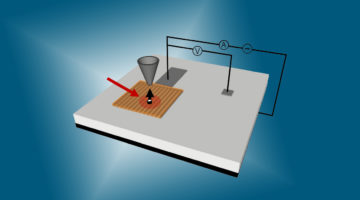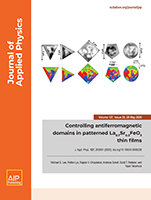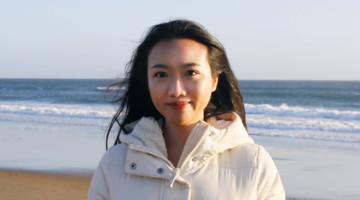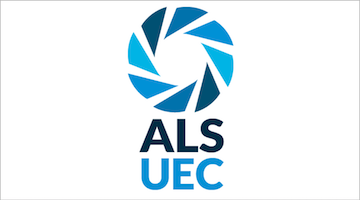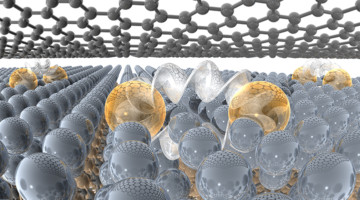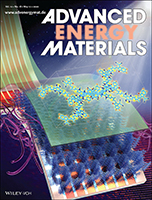The rate-limiting step in catalysis involving oxygen uptake was identified through analysis of the reaction pathways and observations performed under operating conditions. The work lays the foundation for improving the efficiency of energy conversion and storage devices such as fuel cells, catalytic reactors, and batteries. Read more »![]()
![]()
All News & Updates
Controlling antiferromagnetic domains in patterned La0.7Sr0.3FeO3 thin films
Antiferromagnetic spintronics have gained interest because they can be controlled at terahertz frequencies and are insensitive to external magnetic fields. Due to dimensional confinement as well as microstructuring by ion implantation, the spin axis of an antiferromagnetic oxide can be robustly controlled in a deterministic way up to room temperature. Read more »
Jin Qian, Theoretical and Computational Chemistry Postdoc
As a theoretical chemist, Jin Qian builds “virtual universes” that help predict what experimental chemists will see in their research. She focuses on water formation, a theme that carries through to one of her hobbies, which she is sharing with us in this month’s postdoc profile. Read more »
May 2020 Message from the User Office
Berkeley Lab is planning to gradually bring staff back onsite, consistent with federal, state, and local guidance. These plans will begin on June 1 with a small on-site pilot group. We expect a few limited activities at the ALS to be part of this pilot. Once the ALS schedule for the 2020-2 cycle has been published, we will develop a detailed plan for allocating beamtime to proposals. We are exploring how each beamline can set up remote operations to support user experiments while staff maintain social distancing. Read more »
May 2020 Message from the UEC
We are working on making the 2020 User Meeting, which will now take place as an online meeting on August 25–28, as rich and productive as our user meetings normally are. We will announce more details over the next few months. If you wish to nominate someone for one of the awards below, please remember the deadline is June 1. Read more »
A Scalable Platform for Two-Dimensional Metals
Using a new method for stabilizing a two-dimensional (2D) metal on a large-area platform, researchers probed the origins of the material’s superconductivity. The work represents a notable milestone in advancing 2D materials toward broad applications in topological computing, advanced optics, and molecular sensing. Read more »![]()
![]()
X-Ray Experiments Zero in on COVID-19 Antibodies
In the fight against SARS-CoV-2, scientists have been working on identifying neutralizing antibodies that could be used in preventative treatments or as post-exposure therapies. The latest findings, which include data from the ALS, indicate that antibodies from SARS survivors could potently block entry of SARS-CoV-2 into host cells. Read more »![]()
Masks On, Ready to Work: Meet the People Supporting COVID-19 Science
David Richardson’s job is literally to make sure the light stays on. But it’s not just any light—it’s a very special x-ray light that could play a crucial role in an eventual treatment for COVID-19. Richardson is an operator at the ALS, and is one of a handful of workers providing essential services to scientists working on COVID-19-related research. Read more »
A Forked Path for Superconductivity
Uranium ditelluride (UTe2) exhibits a form of superconductivity that could, in theory, enable fault-tolerant quantum computing. Angle-resolved photoemission spectroscopy revealed several aspects of the material’s unusual electronic environment, including one-dimensional conducting channels that are orthogonally oriented. Read more »
Efficient Organic Solar Cell with 16.88% Efficiency Enabled by Refined Acceptor Crystallization and Morphology with Improved Charge Transfer and Transport Properties
Feng Liu and co‐workers report a detailed structure‐performance relationship to help understand the success of Y6 non‐fullerene acceptors. Through the analysis of the single crystal structure of Y6, it is found that Y6 forms a polymer‐like conjugated backbone through its banana‐shaped structure and π‐π interactions between molecules, and forms a 2D electron transport network under the ordered arrangement of the lattice. Read more »
- « Previous Page
- 1
- …
- 66
- 67
- 68
- 69
- 70
- …
- 139
- Next Page »
